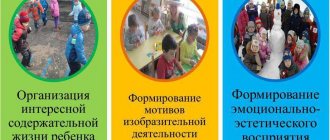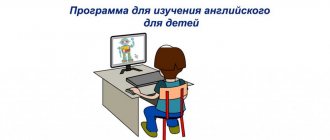Speaking several languages today is not just a “tick” on a resume, but a necessity. Fluency in a foreign language, in particular English, is a mandatory requirement for candidates for almost any highly paid vacancy, and not necessarily in international companies.
People of the older generation are not too lucky in this regard, because previously the level of teaching foreign languages in schools and universities often did not stand up to criticism. But the modern younger generation has an excellent opportunity to master a foreign language with minimal effort, and at the level of a second native one. How to do it?
What is bilingualism
Bilingualism, or bilingualism, is the ability to equally alternately use two languages at once - both in everyday life and in professional activities. This ability can be either innate, obtained naturally, or acquired. Natural bilinguals are usually citizens of countries with two official languages. For example, Canada (English and French), former Soviet republics (for example, Russian and Ukrainian or Belarusian), many Latin American countries. Another common example is children from mixed families where the parents speak different languages.
Today, bilingualism can be considered a huge advantage for those who want to build a successful career, especially in the international labor market. After all, it is often not enough to know a foreign language at a basic level - it is important to communicate freely in a foreign language just as in your native one.
How classes are conducted: main types of training
Bilingual educational institutions conduct classes using one of two methods:
- meaningful;
- subject.
It’s easy to understand how they differ!
In a content-based approach, equal amounts of time are allocated to teaching in both languages. Moreover, all mental processes (memory, attention, thinking, speech) develop in two languages. This contributes to the formation of a bilingual personality; the child assimilates both linguistic cultures and learns to think in two languages. Just imagine what opportunities this provides for the development of personality and horizons!
But the subject methodology is based on teaching one part of the disciplines in Russian, the other in English. Respected experts are of the opinion that with this technology of learning, the child does not become a full-fledged bilingual. The subject method does not develop full-fledged bilingual thinking, does not provide a complete understanding of culture, mentality and socio-cultural characteristics.
The educational process can also be structured in several ways:
- emphasis in studying Russian, mastering English as a second language;
- teaching in the native language with the later addition of a foreign language;
- studying in mixed groups with Russian-speaking and English-speaking children.
And of course, each of the methods involves the use of gaming methods. The children act out skits, sing songs, watch cartoons, and learn poetry and tongue twisters. In class, they study national holidays and culture of another country. Oh, with what pleasure our kids at Heritage School collect chocolate eggs for Easter! And on Halloween, what is going on here, God forgive me!
Bilingualism as a principle of teaching preschoolers
The practice of bilingual education for children of primary preschool age is popular in many countries around the world. It is believed that bilingual education in kindergarten, in comparison with traditional learning of a second language as a foreign language, has a number of important advantages. Thus, a bilingual person acquires the ability to use both languages automatically, literally on a subconscious level. At the same time, the so-called deforming influence of the first (native) language on the one being studied is minimized, because the development of both languages occurs almost simultaneously, naturally, and not through the prism of previously acquired knowledge.
Practice shows that children studying in bilingual kindergartens and schools are deprived of many prejudices and prejudices regarding races and nationalities. In general, they differ from their peers in their broader view of the world, flexibility of thinking, liberation, and readiness to accept new knowledge and learn new skills.
The advantages of bilingual kindergartens for a child also include a significantly faster increase in vocabulary. And both in a foreign and native language.
However, along with the advantages, this teaching method, according to some experts, also has disadvantages. But, in fairness, the vast majority of these shortcomings are associated exclusively with the wrongly chosen methodology and poor quality training:
- With bilingual learning, the child to some extent loses the natural ability to critically compare two different languages and analyze their structure, as happens in classical mixed learning. For children with a relatively low level of mental ability, this may lead to difficulties with the perception of complex structured information in the future.
- With an illiterate approach to learning, a child may lose a close connection with his native culture, adopting the structure of concepts and worldview of a different ethnic group.
- Not all private bilingual kindergartens can boast of truly qualified staff, especially native speakers. Poor quality training in the early stages can in the future lead to difficulties in constructing sentences and holistic perception of speech, incorrect use of lexical connectives and phrases, incorrect intonation and other problems that require long-term correction.
Education at the international bilingual kindergarten CIS International School is conducted according to the Cambridge program, honed over the years. Classes in kindergarten are taught by both Russian-speaking teachers and native English speakers. All of them are qualified certified teachers. Language learning occurs naturally and naturally, with great attention paid to the method of presenting information, the development of children's personal qualities and social skills. Our kindergarten program completely eliminates any potential disadvantages of bilingual education. Graduates of CIS International School are children who are fully prepared to study in primary school, able to work in a group, perceive and analyze information. And students who enter CIS primary school after kindergarten are already able to communicate in English as a second native language by the age of 10-11.
Foreign from kindergarten - is it necessary?
Today no one doubts that knowledge of a foreign language is necessary and important. In schools, a foreign language is studied from primary school. It is even proposed to introduce a mandatory final exam in a foreign language. In many preschool educational institutions and various centers, children are introduced to a foreign language from an early age.
In September 2013, the first specialized English kindergarten was opened in Kostroma, at the request of parents. The city education department supported this initiative and developed a pilot project “English for preschoolers”. The partial program for teaching children 4-5 years old a foreign language is designed for three years. It is expected that by the time they leave kindergarten, most children will be able to communicate fluently not only in Russian, but also in English.
Many parents send their children to foreign language courses almost from birth. At the same time, other parents believe that an early start to learning a foreign language is harmful because it “deprives the child of a carefree childhood.”
There is no consensus among scientists either. The problems of teaching a foreign language to young children have not been fully resolved either in our country or abroad. At the same time, some believe that we can talk about early learning only if we are talking about introducing preschool children to a foreign language. Others believe that early learning of a foreign language means teaching children of primary school age.
A little history
The issue of early teaching of foreign languages arose in the 19th century. It was then that the methodology of early teaching of foreign languages began to emerge as a branch of methodological science. According to the testimony of contemporaries, in our country in the 19th century it was possible to meet a child who spoke three foreign languages fluently: French, English, and German. Teaching languages to 5-10 year old children of the affluent population was widespread.
In 1987, the board of the Ministry of Education of the RSFSR decided to conduct an experiment on teaching foreign languages to children of four years of age (studying in kindergarten) and six years of age (studying in the first grade of secondary school) on the basis of a school or kindergarten. The experiment involved tens of thousands of children. Hundreds of teachers and kindergarten teachers took part in it.
"Pros and cons"
Proponents of early foreign language teaching believe that learning foreign languages in early childhood is useful and effective. Preschool age is an excellent time to start learning languages, since a clear awareness of the difference between his native language and a foreign language has not yet taken root in the child’s mind. A child’s consciousness absorbs new knowledge like a sponge, and after a short time the baby no longer pays attention to the fact that everyone around him does not speak Russian! The most important advantage of such training is the overall educational effect. Parallel learning of two languages develops a child’s mental abilities. Knowledge and study of foreign languages have a beneficial effect on the emotional and moral development of a child, the development of attention, memory, imagination and imaginative thinking. It also stimulates the child’s general speech abilities, which has a beneficial effect on proficiency in the native language.
Those who are against early learning of a foreign language suggest that there is no point in learning a language so early that it is difficult for children, since it can lead to overwork and illness. The main thing is that parents cannot help their children because they do not speak a foreign language. Because if there is no language environment, language skills are quickly lost.
Most teachers and psychologists unanimously agree that learning a foreign language at the age of 5-6 years is unjustified. The question is, then why? But this is where parental ambitions play the main role: every decent kindergarten should teach a foreign language.
From what age?
There is also no clear answer to this question. In domestic and foreign psychology there is evidence that a preschool child masters a foreign language more easily than an adult. However, the duration of the sensitive (most favorable) period for mastering a foreign language is characterized differently by different authors: for example, V. Penfield and R. Roberts define it from 4 to 8 years, and T. Eliot - from 1.5 to 7 years.
Research shows that a child up to eight or nine years of age is a natural expert at mastering speech, but then the speech mechanisms in the brain gradually become less flexible. After the age of ten, one already has to overcome many obstacles caused by natural causes.
Most researchers agree that special foreign language classes can be conducted with children starting from three years old. It makes no sense to do this before the age of three, and when starting to learn a foreign language after ten years, it is already useless to hope for a positive result. Upon reaching this age, it is possible only for a small part of students - namely for those who have language abilities above the average level.
According to scientists, the period of highest “linguistic giftedness” is the fifth year of a child’s life. Thus, they believe, it is best to start learning a foreign language at the age of 4-6, when the child has already mastered the system of his native language quite well, and he treats the new language consciously and seriously.
It is at this age that the child still has few cliches of speech behavior, it is easy for him to “encode” his thoughts in a new way, and he does not experience difficulties when making contact in a foreign language. If the system of teaching a foreign language is structured correctly, then success in mastering a foreign language and creating the necessary prerequisites for further mastery of any language is guaranteed to almost all children.
However, it is still not possible to accurately determine the age at which all children can begin to learn a foreign language, since the psychological prerequisites for its acquisition are formed differently in different children. L.N. Tolstoy also wrote: “Teach children only when their psyche is ready for learning.”
Expert advice
First of all, parents themselves need to understand what goal they are pursuing by sending their child to learn a foreign language. Language learning should be meaningful. The few dozen words children learn during classes will not remain in the child’s memory for long. This kind of knowledge is based on mechanical memory, therefore it is short-term and quickly forgotten.
Learning a foreign language should begin when the child has mastered his native language.
Before you send your child to an early learning foreign language group or find him a teacher, look at his characteristics: is he ready for learning, even in the form of a game; Will he be interested in a foreign language or will he be more interested in drawing or football? Particular attention should be paid to the level of development of the child’s speech in his native language. If your child does not yet pronounce the sounds of his native language clearly enough and is confused about cases and declensions, then it is hardly worth loading him with foreign grammar. Wait a year or two, get rid of speech therapy problems, teach your child to speak their native language beautifully and correctly, and then learning a foreign language will be easier and more effective.
To learn a language, it is necessary to create an appropriate language environment: it is advisable that the whole family speaks the correct foreign language for several hours a day. If this is not possible, you can use audio recordings with songs and poems in a foreign language.
If you have invited a teacher to your child’s home to study the language, ask, first of all, if he has experience working with young children, ask a specialist to objectively assess the child’s knowledge and level of development of his native language.
In preschool age, experts believe, learning a foreign language is allowed if the child’s age characteristics and desires are taken into account and the principle: “Do no harm!” is observed.
In preparation, materials from Internet sites on this topic were used.
Basic methods of bilingual education
Most bilingual kindergartens in Moscow and other large Russian cities use two fundamentally different teaching methods - subject-based and content-based. The subject methodology is that part of the disciplines (or classes in kindergarten) are taught in Russian, the other part in a foreign language. The content-based methodology assumes an equal share of native and foreign languages in the study of all disciplines.
Both methods have subjective pros and cons. But obtaining a truly bicultural bilingual education is only possible when using meaningful methods. In this case, the child ceases to feel a clear line between his native and foreign languages, gets used to thinking in a second language, and learns to operate both languages to the same extent in everyday life and when interacting with teachers.
When choosing a kindergarten or school, parents must clearly understand what they want to achieve - to give their child in-depth knowledge of a foreign language or to ensure that a foreign language becomes a second native language for him.
What are the benefits of bilingualism
Bilingualism today is not a fad, but an urgent necessity. Even Mr Great was forced to learn Russian in order to get a place in the company's Moscow office. But I dare say that the process not only was not a burden to him, but also brought quite a bit of pleasure! I'll tell you a secret, Mr Great even shirked his household duties, justifying himself by the need to learn Russian words! So, today any serious company is already operating in the international market or is striving to do so. Therefore, perfect knowledge of a foreign language is a must-have for a highly paid specialist and a successful professional in any field!
Young ladies and gentlemen who learn a foreign language from kindergarten have excellent memory and developed thinking. As adults, they have a broader horizon, they are less susceptible to prejudices of any kind and it is easier to socialize in a new environment. Bilinguals learn the third and subsequent languages more easily, especially from the same language group. Both humanities and mathematical sciences are equally easy for them.
Considering all these advantages, many parents today choose bilingual education for their children. First in a bilingual kindergarten, then in a similar school.
Disadvantages of bilingual kindergartens
You probably think that everything is too good, that this Mrs. Britain is hiding something. I would definitely think so if I were you! To be honest, there are also disadvantages. So, what disadvantages are you worth knowing about:
- lack of native-speaking teachers in schools;
- the possibility of losing contact with the culture of the native language;
- relatively high cost of educational services.
Be careful, due to the lack of native teachers, in some bilingual kindergartens classes are taught by Russian-speaking English teachers. This is fraught with the fact that the children are given incorrect pronunciation, and words are not always used correctly. I warned you!
But if the emphasis in learning shifts to a foreign language, the child may experience difficulty communicating in his native language. His vocabulary of his native speech is deteriorating; the baby may even completely switch to a foreign language in communication. It is important to monitor the situation and maintain balance.
Bilingual kindergartens are expensive. I won’t deny that few Russians can afford them because of their high cost. In justification, I will cite the British proverb “Money spent on the brain is never spent in vain” (Money spent on education is never wasted.). Bilingual educational institutions are private institutions, so the objectively high cost is a given.
ABC KIDS Preschool: English kindergarten of the British format
The ABC KIDS Preschool garden implements the British preschool education program in synthesis with educational programs developed in Oxford. Each group of 10-12 people is supported not only by a native speaker teacher, but also by a bilingual assistant, whose main task is the organic integration of the child into the English-speaking environment. There are only 4 groups in the garden, enrollment is carried out throughout the year.
The garden is located on Vernadsky Avenue, in an elite complex, so the pupils have at their disposal numerous sports and children's playgrounds, a lovely park with a pond and even a small zoo!
English Nursery & Primary School: English kindergarten and primary school
The system includes five kindergartens and a primary school. The teachers are specially drawn from the UK and have extensive experience working with foreign-language children.
Before entering kindergarten, each little applicant undergoes a mini-test, the purpose of which is to determine the optimal adaptation scheme to the English-speaking environment. The kindergarten practices the use of the English system of preschool education, approved for kindergartens in the UK (the official Russian program is additional). Children are given the opportunity to learn a third language, attend sports clubs and a variety of creative studios.
Zaitsev's technique
The next common technique is that of Nikolai Zaitsev. Suitable for both toddlers and older preschoolers. To teach younger children, the teacher (or parents) give them specially designed blocks with syllables to form words with. Those. memorization occurs in a playful and visual form. The next level also uses cubes.
The main idea is to make the algorithm for constructing sentences in English clear and simple. For each member of a sentence there is a specific color, and the child, having memorized the order of colors, say, for negative sentences, trains to form words under dictation. This is not an easy task for children, but its effectiveness has been proven.
The methodology also includes various manuals and tables, thanks to which parents themselves can conduct lessons without any problems.
Baby-Bilingual Club – one of the best English kindergartens
The extensive structure of the Baby-Bilingual Club includes three bilingual kindergartens, working according to the well-proven method of immersion in a linguistic environment. Boring classes, desks and thick textbooks are not about the Baby-Bilingual Club: it’s always fun there, they sing songs, put on theatrical skits, read and discuss fairy tales. And all this in English!
This English kindergarten is particularly proud of its unique teaching staff. The Baby-Bilingual Club employs exclusively native English speakers who are early childhood development professionals. All of them have at least 5 years of experience and excellent recommendations from past jobs.
In addition to fun and useful activities aimed at developing communication skills, children are offered a lot of other interesting activities: making crafts, an extravaganza of board and active games, theatrical performances, and a choreographic studio. Teachers, students and their parents celebrate many holidays together, often in the fresh air. During the summer months, a language camp is organized at the club’s base in the Hermitage Garden.
HappyBee Kindergarten: Montessori system in action
The HappyBee bilingual kindergarten implements the Montessori system, which means that students are given maximum freedom of action. Classes are taught by native English speakers, but they do not mentor the child towards a given goal, but gently guide him in accordance with the individual program.
The child himself chooses the type of activity (practical, educational, creative, etc.), and English-speaking teachers help him improve. All Montessori manuals involve learning through interaction, through play and communication. The children learn not only English, but also Russian, mathematics, natural sciences, and develop creative abilities in music and fine arts.
The daily routine is as free as possible; there is no mandatory quiet time. Children are accepted from 1.5 years old, full-time - from 2.5 years old.
Cooperation School and its bilingual kindergarten
One of the best English kindergartens operates at the School of Cooperation, where a unique “English Theater” program is implemented. In this wonderful place there is the Pushkin Garden, a corner of Germany, France, Ancient Hellas and, of course, Great Britain, but no matter what wonderful “country” we are talking about, they speak English everywhere! The children were given a real theater where they act as both actors and directors.
A theatrical area with an almost “real” stage and a set of props is available in almost every group. Children actively use the theater corners on their own, trying themselves in the roles of heroes of various works, and experienced teachers (native speakers, of course) help the children in staging real musicals. Studying in the kindergarten of the Cooperation School is an exciting journey around the world with a theatrical and linguistic twist!
How to individualize work with children in the process of educational activities in English
Issues of individualization of work with children are relevant for learning English, since its development depends on the characteristics of the memorization process, the ability to concentrate on a particular type of activity, as well as on the type of temperament: choleric people, as a rule, comprehend new material more easily than phlegmatic people. An individual approach to developing correct pronunciation, which is determined by the child’s speech development, deserves special attention. Some people can easily repeat the sound complexes of a foreign word, while others cannot reproduce even half of the sounds in the correct order. Work with such children should be based on the technique of choral repetition: first, the teacher pronounces the word himself, and then together with the child. In this case, with each repetition, the volume of the adult’s voice should decrease and gradually fade away. In addition, the methods of individualization are:
The task of individualization is to find a task to suit each child’s taste, that is, to create conditions for a situation of success.




